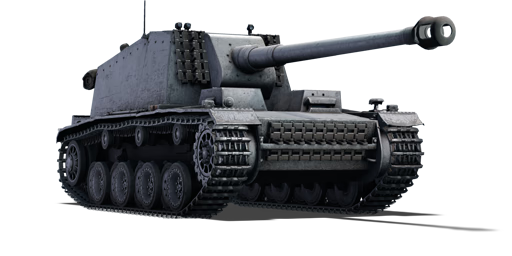



The 128 mm K.40 Panzer Selbstfahrlafette V Ausführung VK 30.01(H) (Sturer Emil) is an experimental World War II German self-propelled anti-fortification gun. It had a 128 mm Rheinmetall Kanone 40 L/61 gun (based on the 12.8 cm FlaK 40) and was based on the Henschel VK 30.01 (H) heavy tank prototype chassis. This gun has limited horizontal traverse but excellent vertical transverse, which makes it suitable to adopt a hull-down position. It had 15 rounds of ammunition for the main gun. The hulls were taken from the leftover of Henschel's proposal for the cancelled VK 30.01 heavy tank program (development of a 30-tonne tank that led to the Tiger Is), but the hull was stretched and an extra road wheel was added to its overlapped and interleaved Schachtellaufwerk roadwheel-based suspension system to accommodate the large gun breech, which was mounted on a pedestal ahead of the engine. Where the turret was supposed to go in the original design, it was redesigned and replaced with a massive open-topped fighting chamber.
Introduced in Update 1.59 "Flaming Arrows", the Sturer Emil works in the same way as other self-propelled anti-fortification guns used by the German Army ground forces, particularly the Dicker Max. With no armour, an excellent gun, and exceptional gun depression, players must play to its strengths while limiting exposure to enemies' lines of sight. To lessen the possibility of being noticed by enemy aircraft, always try to conceal or stay close to a ground structure rather than in the middle of an open field. It can be a little difficult to utilize on urban maps because of its limited horizontal gun movement, but it can still be used to guard positions as long as cover is present.
| Ammunition | Type | Armor penetration (mm) at a distance: | |||||
|---|---|---|---|---|---|---|---|
| 10 m | 100 m | 500 m | 1000 m | 1500 m | 2000 m | ||
| APC | 233 | 230 | 219 | 205 | 193 | 181 | |
| HE | 37 | 37 | 37 | 37 | 37 | 37 | |
| APCBC | 248 | 245 | 234 | 220 | 207 | 195 | |












Mobility | |
|---|---|
Protection |
|---|
Firepower | |
|---|---|